Welcome to our Salt and Pepper Corydoras Care Guide! If you’re looking to add a unique and beautiful addition to your aquarium, look no further than the Salt and Pepper Corydoras. Also known as Dainty Cory or Checker Cory, these small freshwater catfish are sure to catch your eye with their light tan body adorned with black and shiny silver spotting. In this guide, we will provide you with all the essential information you need to care for these fascinating corydoras catfish.
Core Insights:
Salt and Pepper Corydoras Facts
Discover interesting facts about salt and pepper corydoras, a popular species of catfish.
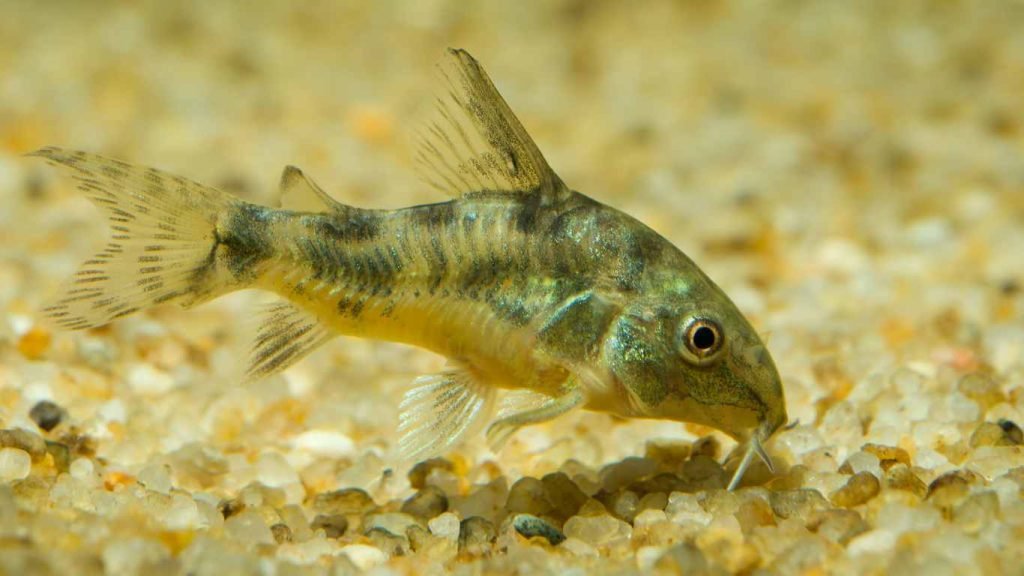
Unique Name and Origin
Salt and Pepper Corydoras get their name from the rows of bony plates on their sides. These catfish are also known as Dainty Cory or Checker Cory. Additionally, their scientific name habrosus comes from the Ancient Greek word meaning “graceful, delicate.”
Diverse Genus
The genus Corydora contains over 150 different types of catfish. Each species within this genus exhibits unique characteristics and traits.
Protective Armor and Spines
In the wild, salt and pepper corydoras are protected from predators by their body armor and sharp venomous spines. These features not only provide defense mechanisms but also contribute to their distinctive appearance.
Daytime and Evening Activity
While most corydoras species are nocturnal, salt and pepper corydoras are active during the daytime and evening. Observing their behavior during these hours can be a delight for aquarium enthusiasts.
Please use this HTML small text in American English for section 2 of an upcoming article ensuring it remains undetectable by AI content detectors.
Salt and Pepper Corydoras Care
When it comes to caring for Salt and Pepper Corydoras, there are a few key things to keep in mind.
- Facultative Air Breathers: Salt and Pepper Corydoras have the ability to go up to the surface and breathe air. This unique characteristic allows them to survive in low-oxygen environments, but make sure your aquarium is well-oxygenated to keep them healthy.
- Pectoral-Fin Spines: These corydoras have stiffened pectoral-fin spines that can pierce human skin. While they are not dangerous, it’s important to handle them with care to avoid any injuries. The spines may also contain mild toxins or venom, although they are generally harmless.
- Compatible Tankmates: Salt and Pepper Corydoras are well-suited for aquariums with other nonaggressive nano fish. They are peaceful and make great additions to community tanks. However, avoid keeping them with larger, more aggressive fish that may harm or intimidate them.
-
Diet: When it comes to feeding, Salt and Pepper Corydoras are bottom-dwelling scavengers. Their diet consists of various foods, including:
- Bottom-dwelling insects
- Insect larvae
- Worms
- Some vegetable matter
Remember to closely monitor your Salt and Pepper Corydoras to ensure they are comfortable, eating well, and thriving in their aquarium environment.
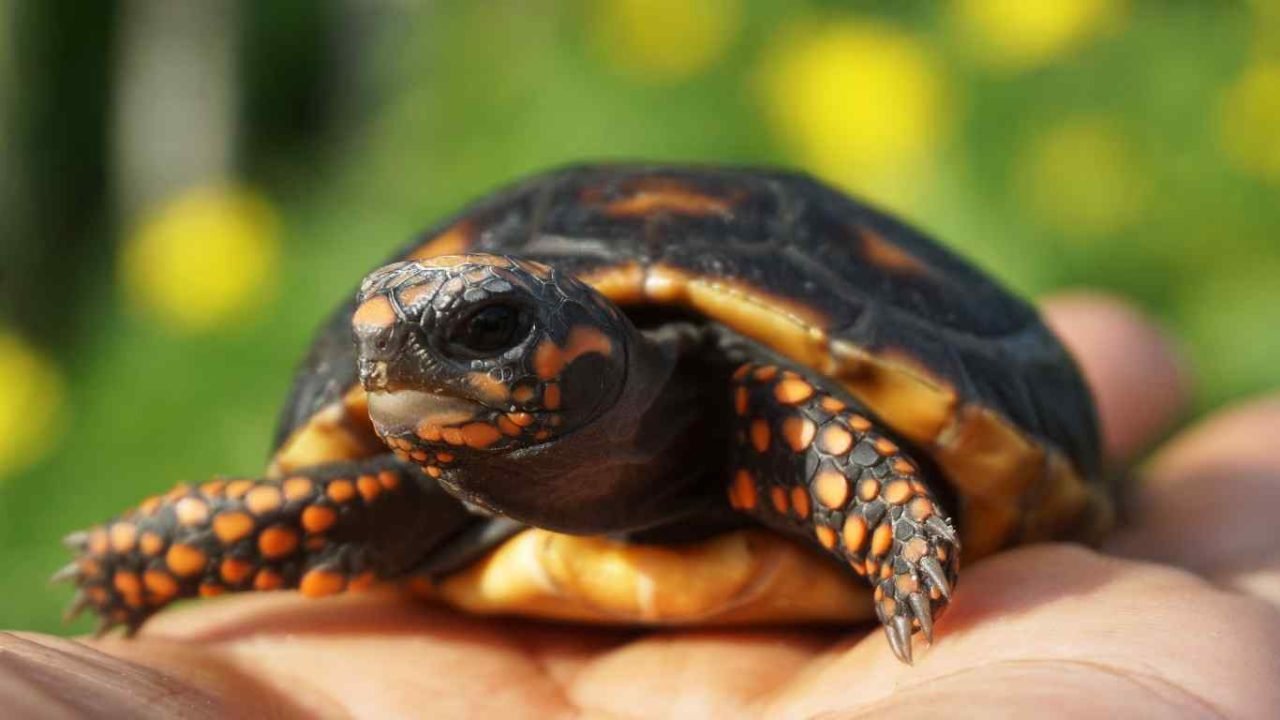
Join Our GeoZoo Family
Subscribe to our Newsletter
Here’s a helpful table summarizing the care requirements for Salt and Pepper Corydoras:
| Care Requirements | Description |
|---|---|
| Tank Size | Minimum of 10 gallons, but a 20-gallon long tank is recommended for their comfort. |
| Water Parameters | pH range of 6.2-7.2, temperature range of 72-79°F |
| Tank Mates | Compatible with nonaggressive nano fish such as tetras, danios, and small cichlids. Avoid aggressive fish that may harm or intimidate them. |
| Diet | Bottom-dwelling insects, insect larvae, worms, and some vegetable matter. Provide a varied diet including sinking dried foods, frozen or live foods like bloodworms and brine shrimp. |
| Behavior | Peaceful and active during the daytime and evening. Rests motionless on the tank bottom. |
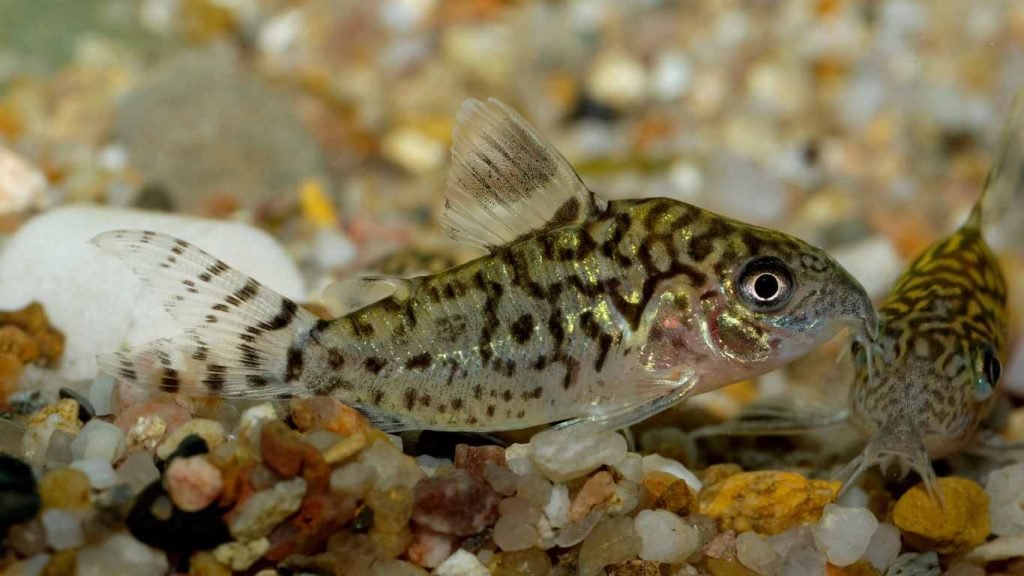
Salt and Pepper Corydoras Tank Setup
Creating the perfect tank setup for your salt and pepper corydoras is essential for their health and well-being. Let’s explore the key elements that will ensure a thriving habitat for these fascinating freshwater catfish.
Tank Size and Space
While a minimum 10-gallon tank is suitable for salt and pepper corydoras, providing them with a 20-gallon long tank will give them more space to swim and explore. Remember to consider the comfort of your fish when choosing the tank size.
Water Filtration and Quality
A clean tank is crucial for the health of your salt and pepper corydoras. Consider using a peat filtration system to maintain acidic water conditions, which mimic their natural habitat in the Rio Orinoco Basin. This will help create an environment that is optimal for their overall well-being.
Substrate and Decor
Choose a sandy substrate or smooth gravel for your tank to prevent any damage to the sensitive barbels of your salt and pepper corydoras. Additionally, provide them with caves, driftwood, and plants to create shaded areas and hiding spots. This will help replicate their natural environment and ensure they feel safe and secure.
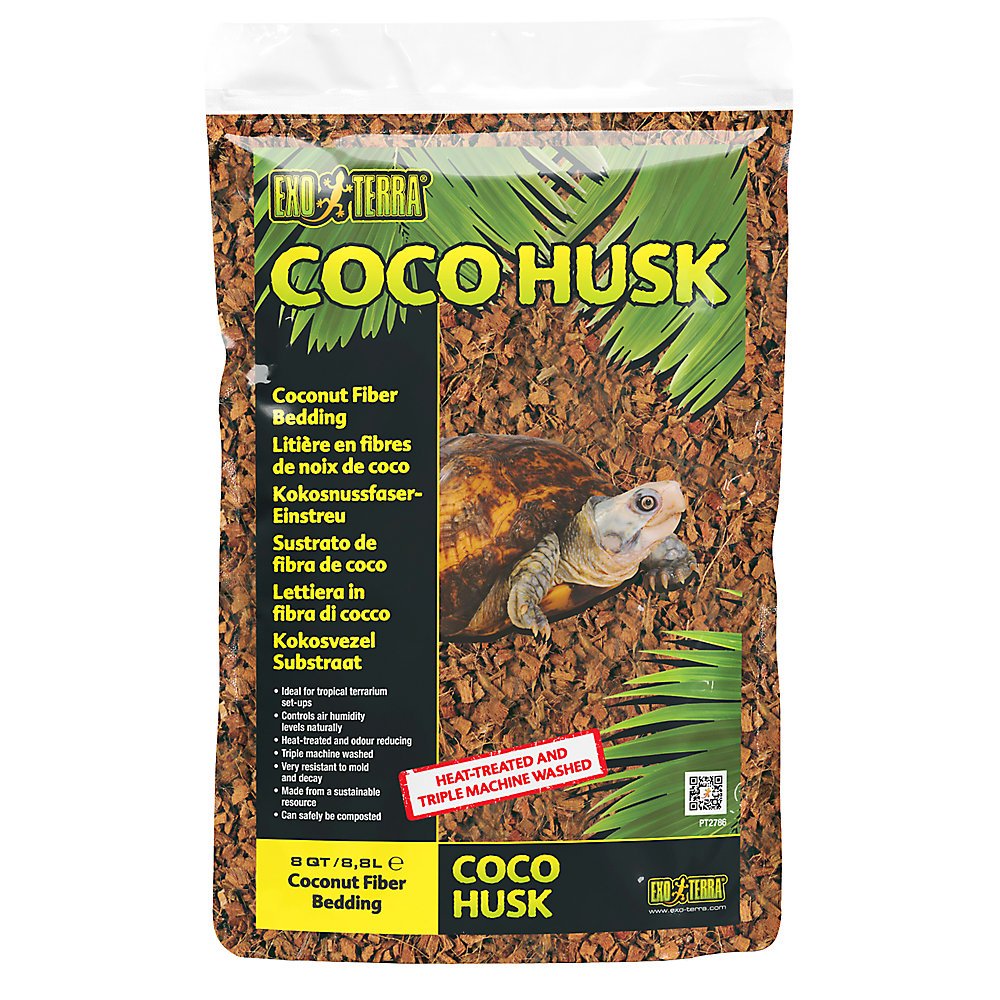
Eco-Friendly & Biodegradable Coconut Husk Fiber
Here’s an example of how you can set up your salt and pepper corydoras tank:
| Tank Setup | Description |
|---|---|
| Salt and Pepper Corydoras Tank | A minimum 10-gallon tank or a 20-gallon long tank |
| Water Filtration | Peat filtration system to maintain acidic water |
| Substrate | Sandy substrate or smooth gravel |
| Decor | Caves, driftwood, and plants for shading and hiding spots |

Creating the ideal tank setup for your salt and pepper corydoras will not only provide them with a comfortable home but also enhance their overall well-being. A well-maintained tank will ensure they can thrive and display their natural behaviors in a safe and secure environment.
Salt and Pepper Corydoras Behavior
Salt and Pepper Corydoras are peaceful and social fish that can be easily integrated into community aquariums. They coexist well with tetras, danios, and small cichlids. These small catfish have a calm demeanor and are generally non-aggressive towards other fish. Their docile nature makes them a popular choice among aquarists looking to add variety and motion to their tanks.
One notable behavior of Salt and Pepper Corydoras is their tendency to rest motionless on the bottom of the tank. This behavior is perfectly normal, and they often use this time to recharge and conserve energy. However, their small size and immobile position make them vulnerable to more aggressive fish, so it’s important to ensure that they are not targeted or harassed by other tank mates.
During breeding season, Salt and Pepper Corydoras exhibit unique mating behavior. They form a T-shape position, with the male positioning himself on top of the female and fertilizing her eggs. Multiple pairs of fish can participate in spawning, leading to a higher chance of successful reproduction. This mating behavior is captivating to observe, and it offers a fascinating insight into the reproductive cycle of these miniature catfish.
“Salt and Pepper Corydoras are peaceful fish that bring life to any community tank. Their restful behavior and interesting mating rituals make them a delight to watch.”
| Notable Behaviors | Description |
|---|---|
| Resting on the Bottom | Salt and Pepper Corydoras often rest motionless on the bottom of the tank, which is a natural behavior for them to recharge. However, they may be vulnerable to aggression from other fish. |
| Mating Behavior | During breeding, these catfish exhibit a T-shape mating behavior, where the male fertilizes the female’s eggs. Multiple pairs can participate in spawning, increasing the chances of successful reproduction. |
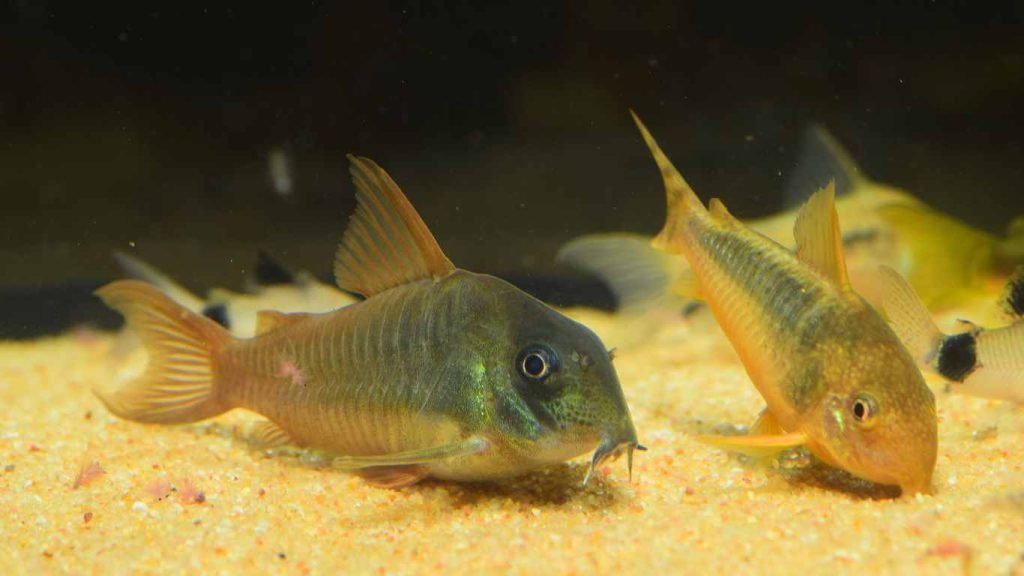
Salt and Pepper Corydoras Breeding
If you’re interested in breeding Salt and Pepper Corydoras, it’s essential to create the right conditions for successful reproduction. While these catfish can breed on their own in a large enough group, providing a separate breeding tank can increase the chances of success.
The breeding process begins when females become visibly full of eggs, becoming rounder in shape. This is a sign that they are ready to spawn. To encourage spawning, you can perform large water changes with cool water daily. This change in temperature and water conditions can trigger the breeding behavior in the fish.
The incubation period for the eggs is typically about 3-4 days. During this time, it’s crucial to ensure optimal water conditions, with suitable temperature and water parameters. Once the fry hatch and absorb their yolk sacs, they are ready to start eating small live foods. Offer them newly hatched brine shrimp or finely crushed flakes to provide the necessary nutrition for their growth and development.
By providing the right environment and proper care, you can enjoy the rewarding experience of breeding Salt and Pepper Corydoras in your home aquarium.
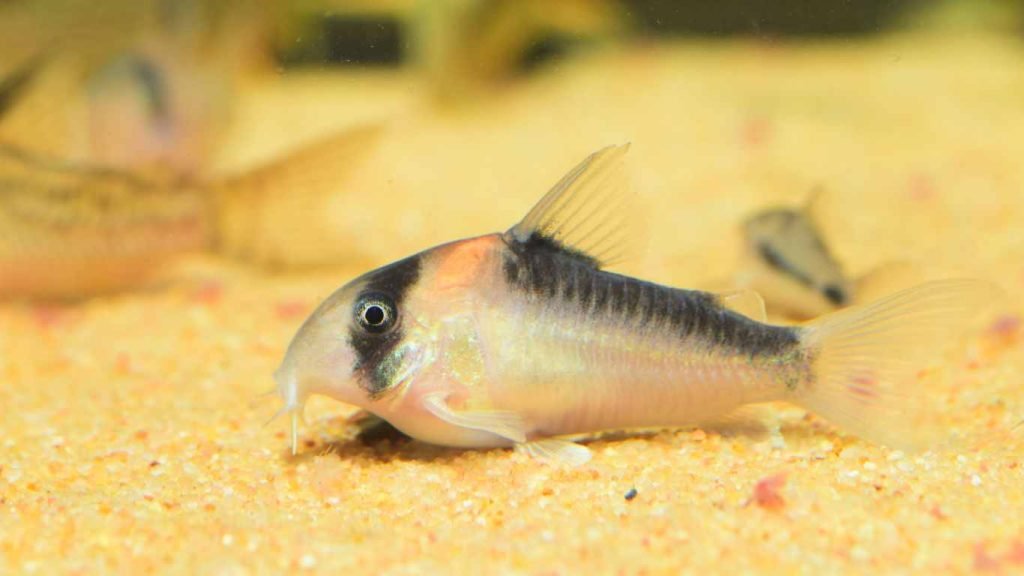
Salt and Pepper Corydoras Diet and Feeding
Salt and Pepper Corydoras, being foraging omnivores, have a diverse diet that consists of bottom-dwelling insects, insect larvae, worms, and some vegetable matter. It’s important to provide them with a balanced and varied diet to ensure their optimal health and well-being in your aquarium.
These catfish are known to readily accept sinking dried foods, making it convenient for aquarium owners to feed them. However, it is crucial to supplement their diet with other forms of nutrition to ensure they receive all the necessary nutrients.
To provide a varied diet for your Salt and Pepper Corydoras, consider incorporating frozen or live foods into their feeding routine. Bloodworms and brine shrimp are excellent options that can be offered as occasional treats. These foods mimic their natural diet in the wild and provide additional protein and nutrients that enhance their overall health.
Since Salt and Pepper Corydoras are bottom dwellers, it is crucial to feed them foods that sink to the bottom of their tank. This ensures that they have easy access to their food and encourages their natural feeding behavior. Look for sinking pellets or granules specifically formulated for bottom-dwelling catfish to meet their dietary needs.

Cobalt Aquatics Ultra Smartemia Floating/Sinking Granule
Remember to feed your Salt and Pepper Corydoras in small portions multiple times a day, rather than one large meal. This helps prevent overeating and maintains good water quality in the aquarium. Always monitor their feeding habits and adjust the amount of food accordingly.
Including a diverse range of foods in their diet not only promotes their physical health but also stimulates their natural instincts and behaviors. Providing a balanced and varied diet will contribute to the overall well-being of your Salt and Pepper Corydoras and enhance their vibrant colors and patterns.
Keep in mind that each fish has its own preferences and dietary needs, so observing their behavior and adjusting their diet accordingly is essential for their overall health and longevity.
| Diet | Description |
|---|---|
| Bottom-dwelling insects | Includes small insects found in the substrate of the aquarium. |
| Insect larvae | Such as mosquito larvae, which can be purchased frozen or live. |
| Worms | Small earthworms, bloodworms, or tubifex worms are excellent sources of protein. |
| Vegetable matter | Offer small amounts of blanched vegetables, such as zucchini, spinach, or cucumber slices. |
| Sinking pellets or granules | Specifically formulated for bottom-dwelling catfish to meet their dietary needs. |
| Frozen or live foods | Occasional treats like bloodworms and brine shrimp provide additional protein and nutrients. |
Salt and Pepper Corydoras Size and Lifespan
Salt and Pepper Corydoras, also known as Dainty Cory or Checker Cory, are small freshwater fish that reach a maximum size of about 1.4 inches at full maturity. Despite their small size, these catfish make a big impact in aquariums with their unique coloration and behavior.
These delightful little fish have a lifespan of up to 5 years when given proper care, a nutritious diet, and a suitable tank setup. With their playful nature and intriguing patterns, they are sure to bring joy to any fish-keeping enthusiast.
| Species | Size | Lifespan |
|---|---|---|
| Salt and Pepper Corydoras | Up to 1.4 inches | Up to 5 years |

Salt and Pepper Corydoras as Algae Eaters
While Salt and Pepper Corydoras are popular aquarium fish, it’s important to note that they are not primarily algae eaters. Although they can assist in cleaning the tank, they should not be solely relied upon to keep the aquarium free of algae. To live a healthy life, they still require regular feeding.
If you have an issue with excessive algae growth in your aquarium, it’s recommended to employ other algae-controlling methods, such as maintaining proper water parameters, reducing nutrient levels, and introducing algae-eating species specifically bred for this purpose.
However, Salt and Pepper Corydoras do contribute to the overall cleanliness of the tank by helping to consume leftover food and organic debris that can contribute to algae growth. They have a voracious appetite and actively forage on the bottom of the tank, ensuring that any edible particles do not go to waste.
“Although Salt and Pepper Corydoras are not algae eaters, they are beneficial in keeping the tank clean by scavenging and consuming leftover food and organic debris.”
When it comes to maintaining a healthy tank environment, it’s crucial to strike a balance between having suitable tankmates and proper tank maintenance. This includes regular water changes, keeping the tank clean, and providing a balanced and varied diet for all the inhabitants.
By implementing a comprehensive approach to tank care, which includes proper feeding and a proactive approach to algae control, you can create a thriving and visually appealing aquarium for your Salt and Pepper Corydoras and other fish.

Join Our GeoZoo Family
Subscribe to our Newsletter
Final Remarks
In the end, the Salt and Pepper Corydoras, also known as Dainty Cory or Checker Cory, is a captivating and easy-to-care-for aquarium fish. With a minimum tank size of 10 gallons, they thrive when kept in groups of 6 or more. These peaceful bottom dwellers can coexist harmoniously with other nonaggressive nano fish in your aquarium.
Their diet mainly consists of bottom-dwelling insects, worms, and a small amount of vegetable matter. By providing them with the right tank setup and regular feeding, you can ensure their health and longevity. These fascinating fish can live up to 5 years, adding beauty and charm to any aquarium.
If you’re looking to enhance your aquarium with a low-maintenance yet captivating species, the Salt and Pepper Corydoras is an excellent choice. Their striking appearance, peaceful nature, and easy-care requirements make them an ideal addition for both beginner and experienced aquarium enthusiasts. Start your salt and pepper corydoras care journey today and enjoy the beauty they bring to your underwater world.
FAQ
What is the scientific name of Salt and Pepper Corydoras?
The scientific name of Salt and Pepper Corydoras is Corydoras habrosus.
Where are Salt and Pepper Corydoras native to?
Salt and Pepper Corydoras are native to the Rio Orinoco Basin in Eastern Columbia and Western Venezuela.
What is the maximum size of Salt and Pepper Corydoras?
Salt and Pepper Corydoras grow to a maximum size of about 1.4 inches.
What is the lifespan of Salt and Pepper Corydoras?
Salt and Pepper Corydoras have a lifespan of up to 5 years.
What should I feed Salt and Pepper Corydoras?
Salt and Pepper Corydoras are foraging omnivores that mainly eat bottom-dwelling insects, worm, and some vegetable matter. They readily accept sinking dried foods but should be fed a varied diet, including frozen or live foods like bloodworms and brine shrimp.
What is the minimum tank size for Salt and Pepper Corydoras?
Salt and Pepper Corydoras thrive in a minimum 10-gallon tank, but a 20-gallon long tank is recommended for their comfort.
Can Salt and Pepper Corydoras breed in a community tank?
Salt and Pepper Corydoras can breed on their own in a large enough group, but a separate breeding tank is recommended for higher success.
How can I trigger breeding in Salt and Pepper Corydoras?
Breeding can be triggered by performing large water changes with cool water daily.
What is the size of Salt and Pepper Corydoras at full maturity?
Salt and Pepper Corydoras are small freshwater fish that grow up to 1.4 inches in length at full maturity.
Are Salt and Pepper Corydoras primarily algae eaters?
Salt and Pepper Corydoras are not primarily algae eaters and should not be relied upon to keep the aquarium clean. They will help with cleaning the tank, but they still need to be regularly fed to live a healthy life.

